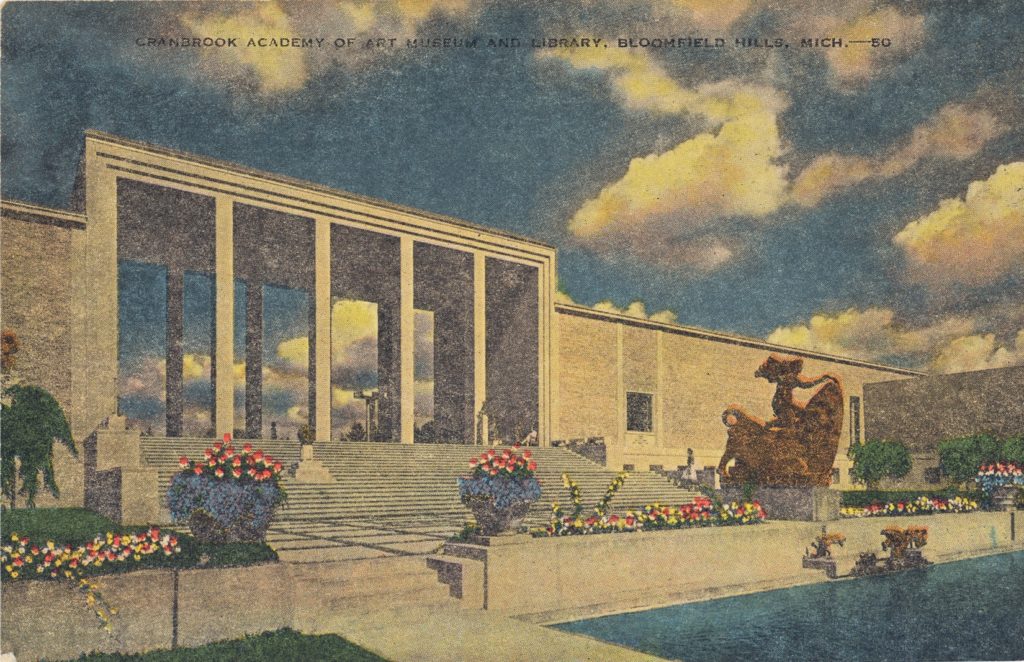Cranbrook Academy of Art

Postcard with image of Cranbrook Art Museum
Published by Dean Brothers, Pontiac, MI
Courtesy Cranbrook Archives
“Cranbrook Academy of Art is not an art school in the ordinary meaning. It is a working place for creative art.” Eliel Saarinen
Each piece of midcentury modern furniture in the Winterthur collection can be linked to a designer who studied at the Cranbrook Academy of Art in Bloomfield Hills, Michigan. In 1904, George Gough Booth and his wife Ellen Scripps Booth purchased the 319-acre campus that would become the famous artist incubator. Eliel Saarinen (1873–1950), a modernist Finnish architect, was commissioned to design four major buildings on the campus and acted as the director of the school beginning in 1932. Cranbrook was far more than a school; in a similar fashion to the Bauhaus, it was and is a residential community established to assert the values of aesthetic order against the disorder of an industrial society. Cranbrook imparted a spirit of connection among students, from Eliel’s son, Eero, to the Eames and Knoll duos. It was at Cranbrook that midcentury modern designers developed their unique and organic styles and built relationships that were fundamental to the development of the movement. Cranbrook provided a space for community that Charles Eames described as a “free-flowing atelier with the forces coming from the people within it.” Each class of design and architecture students were a small community of around twenty that would go on to create the material objects that define midcentury modernism. These students included Charles Eames, Eero Saarinen, Harry Weese, Harry Bertoia, Ray Kaiser (later Ray Eames), and Florence Schust (later Florence Knoll).
